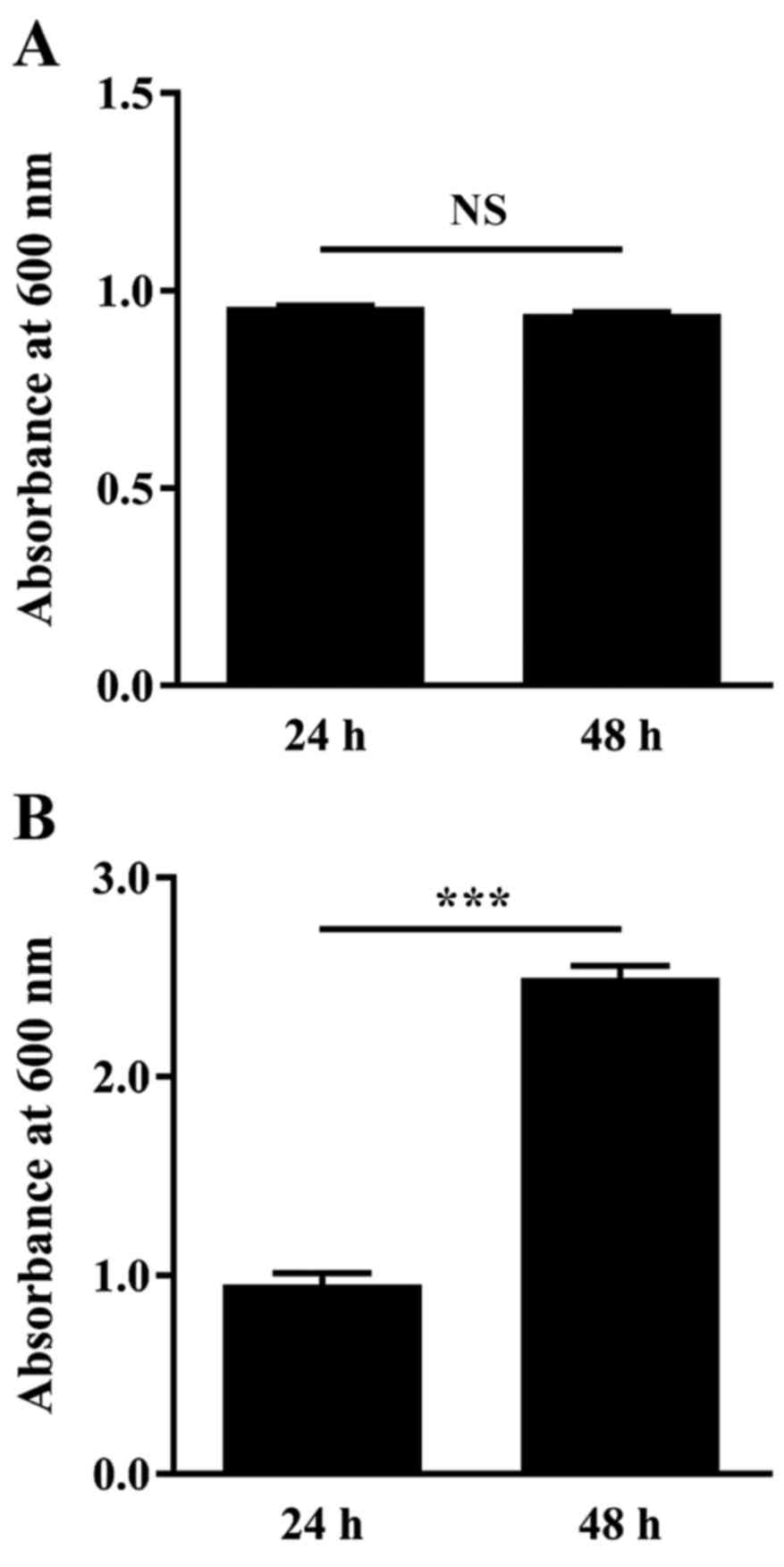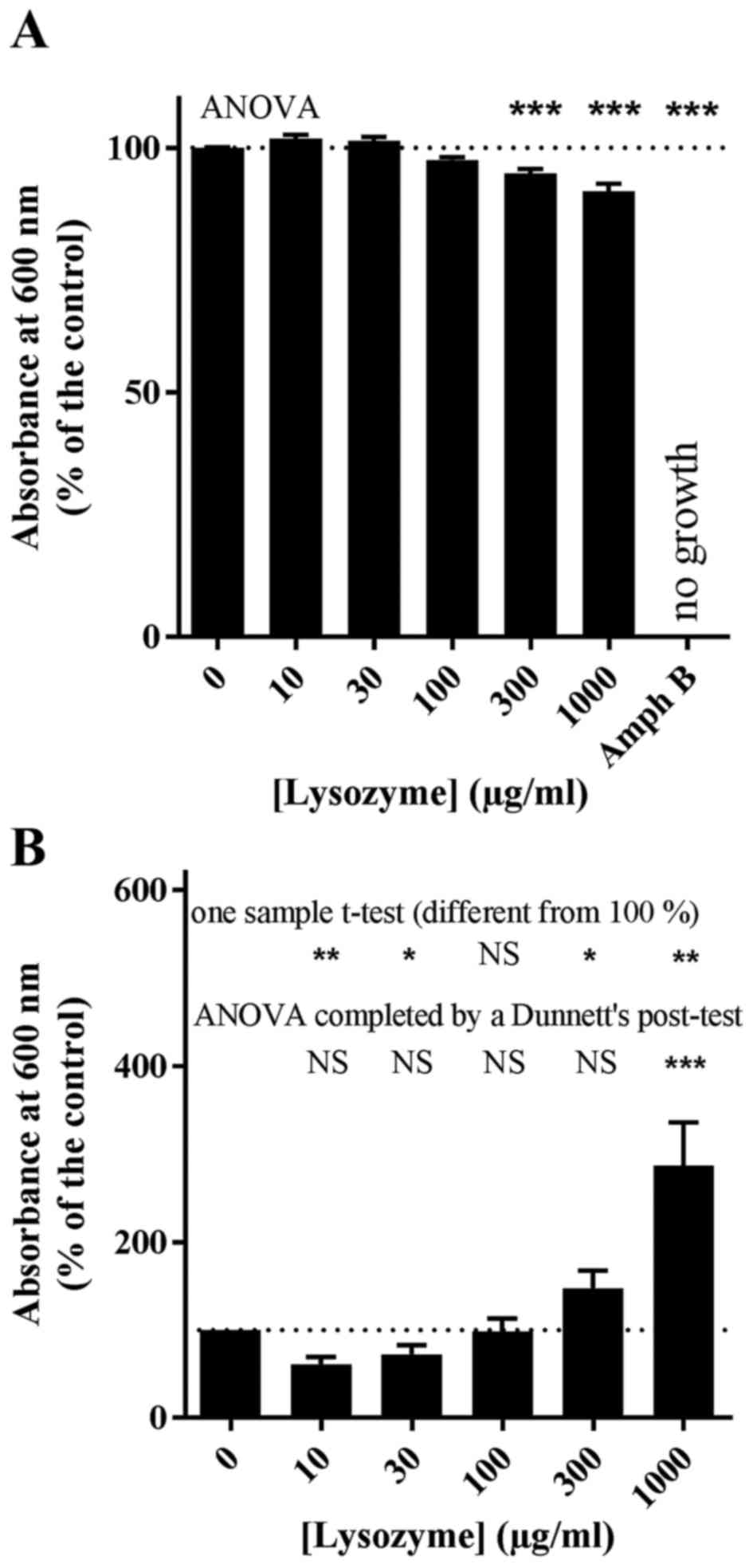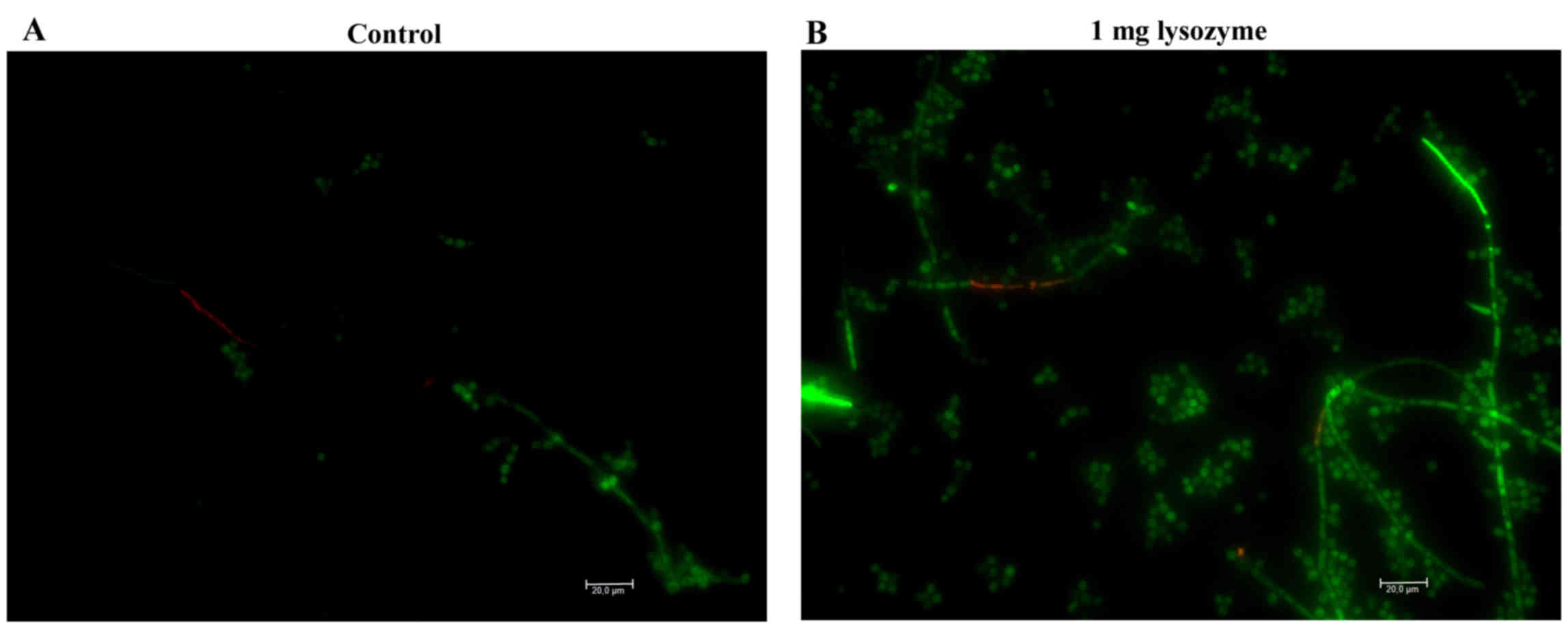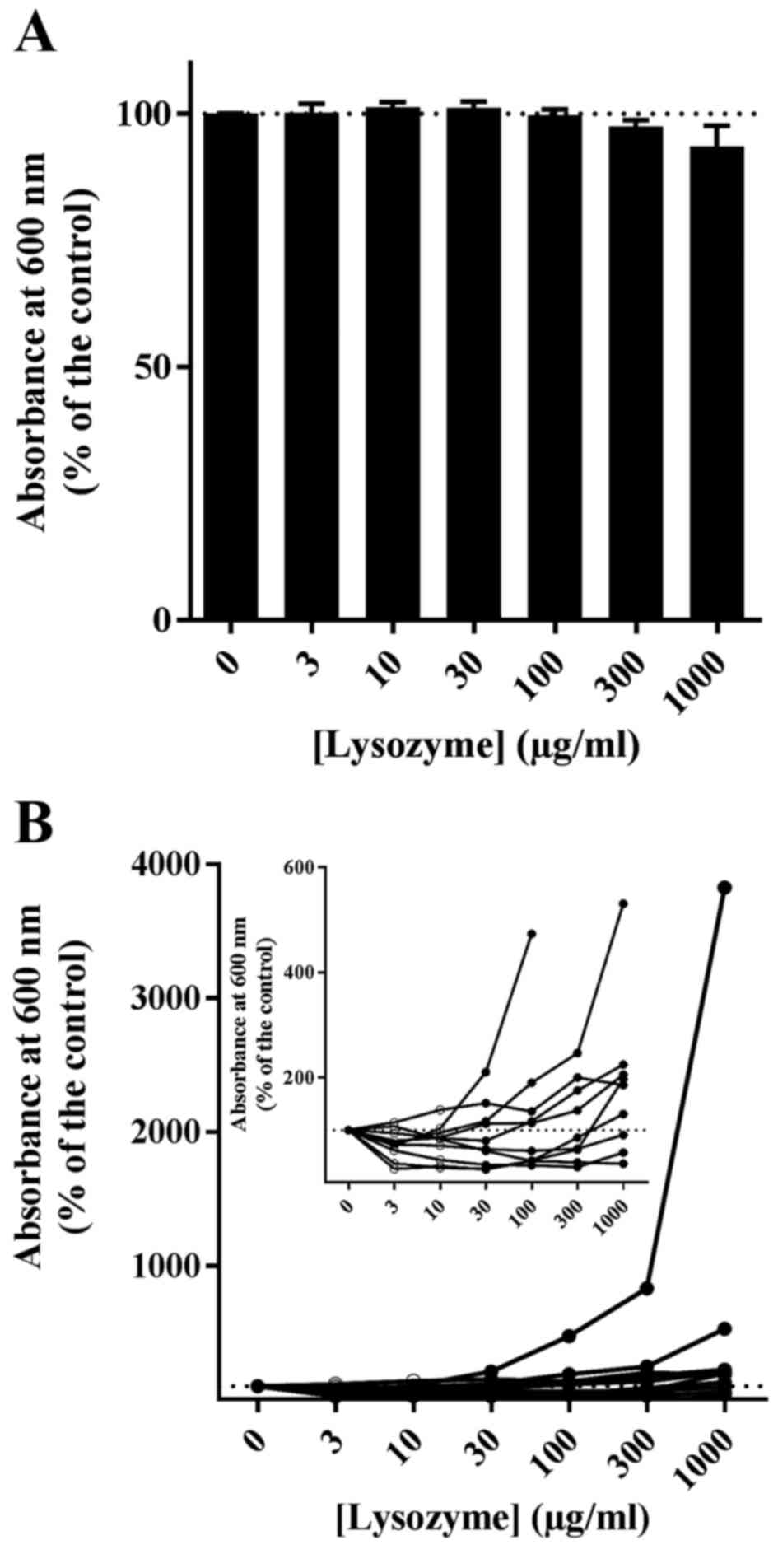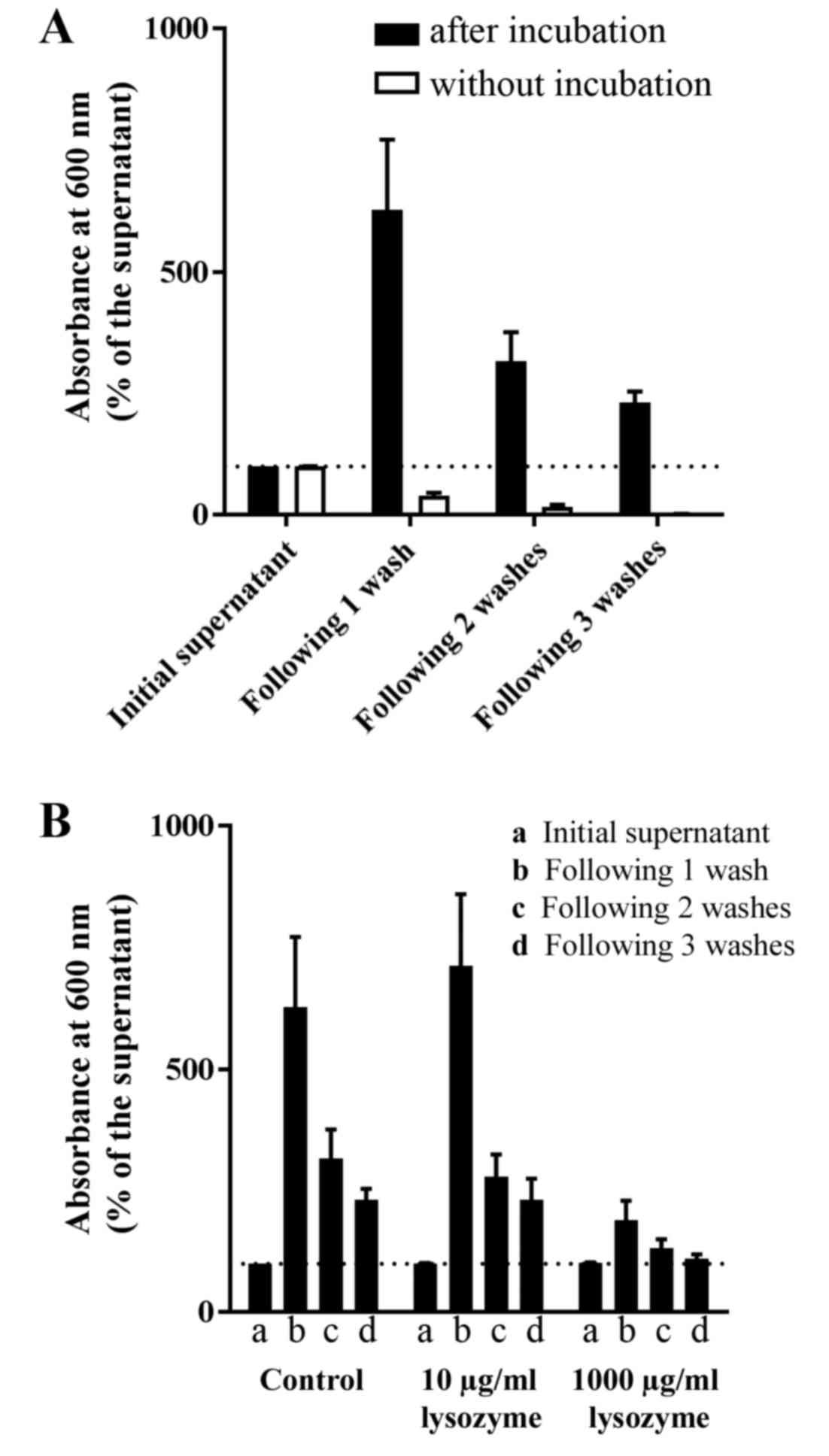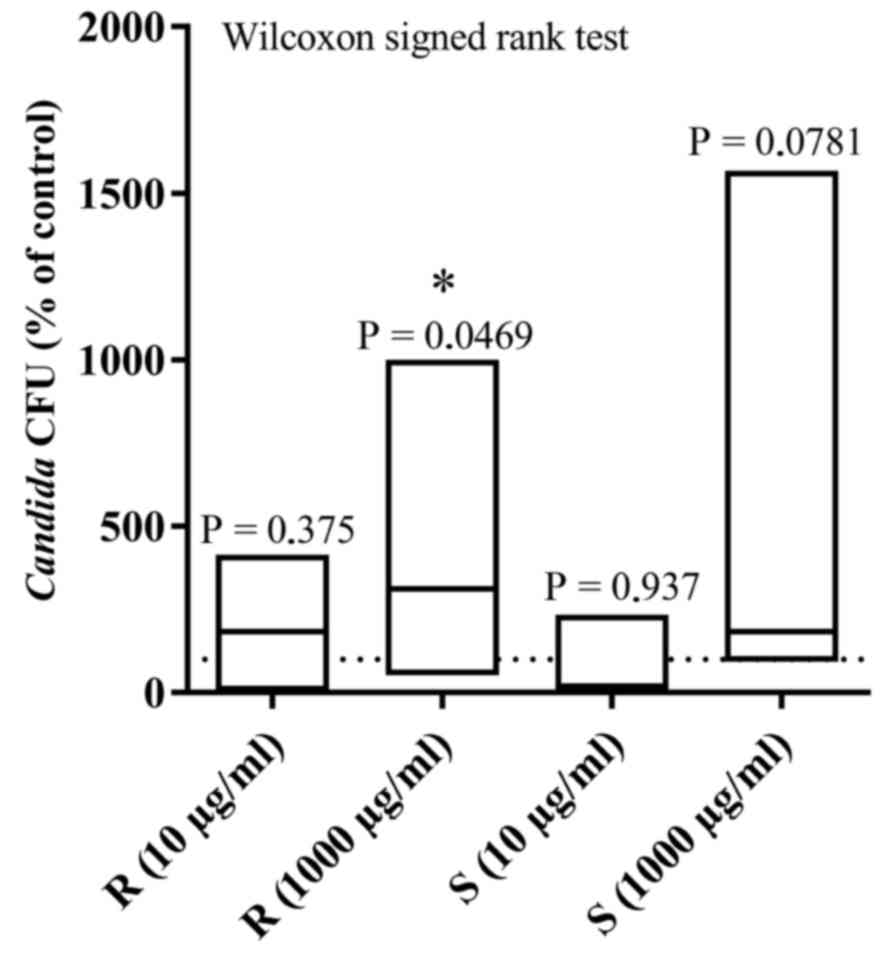|
1
|
Radford DR, Challacombe SJ and Walter JD:
Denture plaque and adherence of Candida albicans to
denture-base materials in vivo and in vitro. Crit Rev Oral Biol
Med. 10:99–116. 1999. View Article : Google Scholar : PubMed/NCBI
|
|
2
|
Courtois Ph: Candida biofilms on
oral biomaterials. Biomaterials-Physics and chemistry. Pignatello
R: Intech; Rjieka: pp. 475–490. 2011
|
|
3
|
Epstein JB, Truelove EL and Izutzu KT:
Oral candidiasis: Pathogenesis and host defense. Rev Infect Dis.
6:96–106. 1984. View Article : Google Scholar : PubMed/NCBI
|
|
4
|
Webb BC, Thomas CJ, Willcox MD, Harty DW
and Knox KW: Candida-associated denture stomatitis.
Aetiology and management: A review. Part 1. Factors influencing
distribution of Candida species in the oral cavity. Aust
Dent J. 43:45–50. 1998. View Article : Google Scholar : PubMed/NCBI
|
|
5
|
Ramage G, Tomsett K, Wickes BL,
López-Ribot JL and Redding SW: Denture stomatitis: A role for
Candida biofilms. Oral Surg Oral Med Oral Pathol Oral Radiol
Endod. 98:53–59. 2004. View Article : Google Scholar : PubMed/NCBI
|
|
6
|
Fleming A: On a remarkable bacteriolytic
element found in tissues and secretions. Proc R Soc Lond B Biol
Sci. 93:306–317. 1922. View Article : Google Scholar
|
|
7
|
Gordon S, Todd J and Cohn ZA: In vitro
synthesis and secretion of lysozyme by mononuclear phagocytes. J
Exp Med. 139:1228–1248. 1974. View Article : Google Scholar : PubMed/NCBI
|
|
8
|
Vukosavljevic D, Custodio W and Siqueira
WL: Salivary proteins as predictors and controls for oral health. J
Cell Commun Signal. 5:271–275. 2011. View Article : Google Scholar : PubMed/NCBI
|
|
9
|
Fábián TK, Hermann P, Beck A, Fejérdy P
and Fábián G: Salivary defense proteins: Their network and role in
innate and acquired oral immunity. Int J Mol Sci. 13:4295–4320.
2012. View Article : Google Scholar : PubMed/NCBI
|
|
10
|
Phillips DC: The three-dimensional
structure of an enzyme molecule. Sci Am. 215:78–90. 1966.
View Article : Google Scholar : PubMed/NCBI
|
|
11
|
Masschalck B and Michiels CW:
Antimicrobial properties of lysozyme in relation to foodborne
vegetative bacteria. Crit Rev Microbiol. 29:191–214. 2003.
View Article : Google Scholar : PubMed/NCBI
|
|
12
|
MacKay BJ, Goodman H, Cox D, Grossbard BL,
Iacono VJ and Pollock JJ: Development of an enzyme-linked
immunosorbent assay for determination of lysozyme in human parotid
and submandibular-sublingual salivas. J Clin Microbiol. 19:844–848.
1984.PubMed/NCBI
|
|
13
|
Noble RE: Salivary alpha-amylase and
lysozyme levels: A non-invasive technique for measuring parotid vs
submandibular/sublingual gland activity. J Oral Sci. 42:83–86.
2000. View Article : Google Scholar : PubMed/NCBI
|
|
14
|
Brandtzaeg P and Mann WV Jr: A comparative
study of the lysozyme activity of human gingival pocket fluid,
serum and saliva. Acta Odontol Scand. 22:441–455. 1964. View Article : Google Scholar : PubMed/NCBI
|
|
15
|
Eisenberg RJ, Bowers GM and Bergquist JJ:
Lysozyme activity in gingival crevicular fluid. J Baltimore Coll
Dent Surg. 32:83–85. 1977.PubMed/NCBI
|
|
16
|
Sakalauskiene J, Surna A, Ivanauskiene E,
Zekonis G and Gleiznys A: Secretory function of neutrophilic
leucocytes of the patients with periodontal diseases.
Stomatologija. 7:90–94. 2005.PubMed/NCBI
|
|
17
|
Stuchell RN and Mandel ID: A comparative
study of salivary lysozyme in caries-resistant and
caries-susceptible adults. J Dent Res. 62:552–554. 1983. View Article : Google Scholar : PubMed/NCBI
|
|
18
|
Woods CM, Hooper DN, Ooi EH, Tan LW and
Carney AS: Human lysozyme has fungicidal activity against nasal
fungi. Am J Rhinol Allergy. 25:236–240. 2011. View Article : Google Scholar : PubMed/NCBI
|
|
19
|
Marquis G, Montplaisir S, Garzon S,
Strykowski H and Auger P: Fungitoxicity of muramidase.
Ultrastructural damage to Candida albicans. Lab Invest.
46:627–636. 1982.PubMed/NCBI
|
|
20
|
Marquis G, Garzon S, Strykowsky H and
Auger P: Cell walls of normal and lysozyme-damaged blastoconidia of
Candida albicans: Localization of surface factor 4 antigen
and vicinal-glycol staining. Infect Immun. 59:1312–1318.
1991.PubMed/NCBI
|
|
21
|
Edgerton M and Koshlukova SE: Salivary
histatin 5 and its similarities to the other antimicrobial proteins
in human saliva. Adv Dent Res. 14:16–21. 2000. View Article : Google Scholar : PubMed/NCBI
|
|
22
|
Kamaya T: Flocculation phenomenon of
Candida albicans by lysozyme. Mycopathol Mycol Appl.
37:320–330. 1969. View Article : Google Scholar : PubMed/NCBI
|
|
23
|
Tenovuo J: Clinical applications of
antimicrobial host proteins lactoperoxidase, lysozyme and
lactoferrin in xerostomia: Efficacy and safety. Oral Dis. 8:23–29.
2002. View Article : Google Scholar : PubMed/NCBI
|
|
24
|
Gil-Montoya JA, Guardia-López I and
González-Moles MA: Evaluation of the clinical efficacy of a
mouthwash and oral gel containing the antimicrobial proteins
lactoperoxidase, lysozyme and lactoferrin in elderly patients with
dry mouth: A pilot study. Gerodontology. 25:3–9. 2008. View Article : Google Scholar : PubMed/NCBI
|
|
25
|
Güneri P, Alpöz E, Epstein JB, Çankaya H
and Ates M: In vitro antimicrobial effects of commercially
available mouth-wetting agents. Spec Care Dentist. 31:123–128.
2011. View Article : Google Scholar : PubMed/NCBI
|
|
26
|
Lee JY, Kim YY, Chang JY, Park MS and Kho
HS: The effects of peroxidase on the enzymatic and candidacidal
activities of lysozyme. Arch Oral Biol. 55:607–612. 2010.
View Article : Google Scholar : PubMed/NCBI
|
|
27
|
Cho MA, Kim YY, Chang JY and Kho HS:
Interactions between hyaluronic acid, lysozyme, and the glucose
oxidase-mediated lactoperoxidase system in enzymatic and
candidacidal activities. Arch Oral Biol. 58:1349–1356. 2013.
View Article : Google Scholar : PubMed/NCBI
|
|
28
|
Samaranayake YH, Samaranayake LP, Wu PC
and So M: The antifungal effect of lactoferrine and lysozyme on
Candida krusei and Candida albicans. APMIS.
105:875–883. 1997. View Article : Google Scholar : PubMed/NCBI
|
|
29
|
Kang JH, Kim YY, Chang JY and Kho HS:
Influences of hyaluronic acid on the anticandidal activities of
lysozyme and the peroxidase system. Oral Dis. 17:577–583. 2011.
View Article : Google Scholar : PubMed/NCBI
|
|
30
|
Collins MS and Pappagianis D:
Lysozyme-enhanced killing of Candida albicans and
Coccidioides immitis by amphoteracin B. Sabouraudia.
12:329–340. 1974. View Article : Google Scholar : PubMed/NCBI
|
|
31
|
Nishiyama Y, Nakaoka C, Hiratani T, Abe S,
Uchida K and Yamaguchi H: Synergy of lysozyme and lanoconazole on
the morphology of Candida albicans. J Electron Microsc
(Tokyo). 50:41–49. 2001. View Article : Google Scholar : PubMed/NCBI
|
|
32
|
Anil S and Samaranayake LP: Impact of
lysozyme and lactoferrin on oral Candida isolates exposed to
polyene antimycotics and fluconazole. Oral Dis. 8:199–206. 2002.
View Article : Google Scholar : PubMed/NCBI
|
|
33
|
Samaranayake YH, Cheung BP, Parahitiyawa
N, Seneviratne CJ, Yau JY, Yeung KW and Samaranayake LP:
Synergistic activity of lysozyme and antifungal agents against
Candida albicans biofilms on denture acrylic surfaces. Arch
Oral Biol. 54:115–126. 2009. View Article : Google Scholar : PubMed/NCBI
|
|
34
|
Tanida T, Okamoto T, Okamoto A, Wang H,
Hamada T, Ueta E and Ozaki T: Decreased excretion of antimicrobial
proteins and peptides in saliva of patients with oral candidiasis.
J Oral Pathol Med. 32:586–594. 2003. View Article : Google Scholar : PubMed/NCBI
|
|
35
|
Silva MP, Junior Chibebe J, Jorjão AL,
Machado AK, Oliveira LD, Junqueira JC and Jorge AO: Influence of
artificial saliva in biofilm formation of Candida albicans
in vitro. Braz Oral Res. 26:24–28. 2012. View Article : Google Scholar : PubMed/NCBI
|
|
36
|
Stepanovic S, Vukovic D, Dakic I, Savic B
and Svabic-Vlahovic M: A modified microtiter-plate test for
quantification of staphylococcal biofilm formation. J Microbiol
Methods. 40:175–179. 2000. View Article : Google Scholar : PubMed/NCBI
|
|
37
|
Iacono VJ, MacKay BJ, DiRienzo S and
Pollock JJ: Selective antibacterial properties of lysozyme for oral
microorganisms. Infect Immun. 29:623–632. 1980.PubMed/NCBI
|
|
38
|
Salton MR: Cell structure and the the
enzymic lysis of bacteria. J Gen Microbiol. 9:512–523. 1953.
View Article : Google Scholar : PubMed/NCBI
|
|
39
|
Edgerton M and Levine MJ: Characterization
of acquired denture pellicle from healthy and stomatitis patients.
J Prosthet Dent. 68:683–691. 1992. View Article : Google Scholar : PubMed/NCBI
|
|
40
|
Kamaya T: Lytic action of lysozyme on
Candida albicans. Mycopathol Mycol Appl. 42:197–207. 1970.
View Article : Google Scholar : PubMed/NCBI
|



